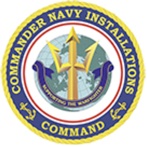Maritime Security Barrier Fiber-Optic Sensor
Fiber-Optic Sensors
Fiber-Optic sensors can be added to new or existing Port Security Barriers or any HALO Maritime Security Barrier. Get 99.99% reliable underwater and above water detection.
Fiber-optic sensors installed with Port Security Barriers can provide a significant increase in maritime security barrier effectiveness with detection of any intrusion both below and above the water. The ability to sense covert underwater intrusion by a swimmer or UAV fills a security gap in existing barriers.
When you need to add intrusion detection sensors in your Port Security Barrier (PSB), HALO has a solution. Teamed with one of the premier fiber-optic sensor detection companies, we are incorporating the sensor elements into our mechanical barrier designs. The results and capabilities will impress you. The increase in security posture is huge.


Some of the key features of our system include:
- 99.99% probability of detection for any intrusion
- Essentially zero false alarm rate
- Targeted for high and medium risk installations where more comprehensive security is mandatory
- Durable with an expected 30-year life for the fiber-optic components
- Immune to interference from noise, RF, EMI, or magnetic fields
- Not affected by wind, shock, or vibration. Very rugged
- Integrates into existing security barrier monitoring systems or with a new stand-alone monitor from HALO
The technology consists of a net woven from fiber-optic netting. Modular components are built into zones and then into complete systems. The cables carry a coded IR light so that any cut or break in the light path triggers an alarm. Provisions are made to prevent climbing over or swimming under the sensor cables.
Not sure what barrier is best for you?
Six Questions To Get the Right Barrier For Your Project
Barrier Selector ToolContact HALO to discuss adding fiber-optic sensors to your existing or new port security barrier.
Our engineering team will have a solution to your most demanding requirements.
Contact Us










